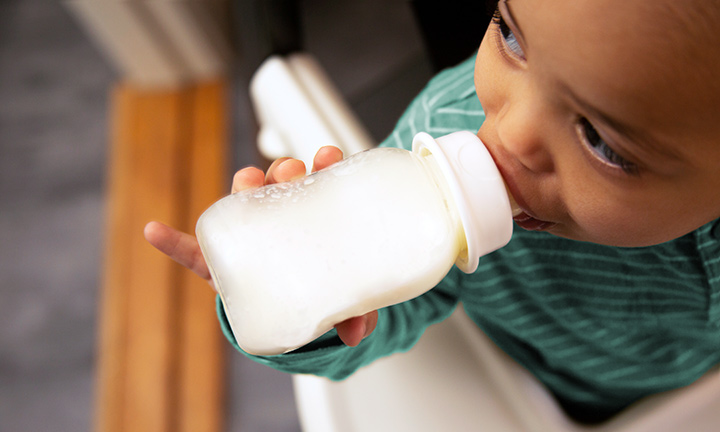
What is a Clogged Milk Duct and What Causes It?
4 min readUpdated January 29, 2025
4 min readUpdated January 29, 2025
When you're nursing your baby, you might eventually end up with a clogged milk duct. Find out why clogged milk ducts happen, what the clogged duct symptoms are, and how it can be treated and prevented.
What Is a Clogged Milk Duct?
While breastfeeding your baby, you may experience a clogged milk duct along the way.
Milk ducts are tiny tubes that carry milk from glands (called lobules) inside the breast out to the nipple. Each nipple has 15 to 25 tiny openings called pores, but only about 6 or 7 are open to release milk during nursing.
Sometimes a duct can get blocked with milk, which may result in an area of your breast becoming red and tender.
What Are the Signs of a Clogged Milk Duct?
Here are some clogged milk duct symptoms:
Recognizing clogged duct symptoms early can help you address the issue promptly.
What Does a Clogged Milk Duct Look Like/Feel Like?
You may not know that you have a clogged milk duct just by looking at your breast. If you're unsure on how to know if you have a clogged milk duct, it's a combination of how it looks and feels. If you are experiencing some clogged milk duct symptoms —such as a red and irritated area on your breast that feels soft, tender, or dense upon touching it—it may be a clogged milk duct.
What Causes a Clogged Milk Duct?
Clogged milk ducts can happen due to any of the following:
Treatment for a Blocked Milk Duct
There are several ways to deal with a clogged milk duct, such as:
If you experience any body aches or a fever in addition to the clogged milk duct , it’s best to reach out to your healthcare provider, as it may be a sign of a breast infection called mastitis.
If you’re unsure what’s causing breast pain or tenderness, go to your healthcare provider for a professional diagnosis.
How Can You Prevent Clogged Milk Ducts?
There are a few steps you can take in order to prevent clogged milk ducts .You may recognize many of the following tips from above, as these prevention strategies can also help clear a clogged milk duct :
If you're having trouble with latching, dealing with frequent clogged milk ducts , or just have questions about breastfeeding, don't hesitate to contact your doctor or talk to a lactation consultant for personalized support and advice.
Can You Squeeze a Plugged Milk Duct?
It’s not the clogged milk duct that you can squeeze, but, in fact, the nipple. If you notice that there is dried milk on your nipple or the nipple pore is clogged, you can soak the affected nipple in warm water and then try to express milk by hand to loosen and expel the milk that’s causing the blockage.
How Do You Massage a Clogged Milk Duct?
It’s best to massage the affected breast starting from the area where you feel the lump (the area of the clogged milk duct ) toward the nipple. This helps move the blockage toward the nipple so that it can be expelled. You can do this before you breastfeed your baby, during breastfeeding, or when you’re taking a bath or a shower.
Does Ibuprofen Help Clogged Milk Ducts?
Yes, painkillers like ibuprofen or acetaminophen can help manage the pain associated with a clogged milk duct . Be sure to check with your healthcare provider first before taking any over-the-counter pain medicine, though, just to be on the safe side.
The Bottom Line
Clogged milk ducts can happen for many reasons, including if you’re unable to fully empty your breast when breastfeeding your little one. Luckily, there are steps you can take to prevent and clear a clogged milk duct.
Sticking to a regular breastfeeding schedule, trying different nursing positions, and making sure your little one feeds for as long as it takes to empty your breast of milk can all help prevent and/or clear a clogged milk duct . If your baby doesn’t feed for as long as you need him to, feel free to express or pump out the excess milk.
Having the pain and discomfort that comes along with a clogged milk duct isn’t easy, but sticking to a regular breastfeeding routine and paying attention to your baby’s feeding patterns and latch is key to preventing future clogged milk ducts . If you’re ever in need of help, turn to your healthcare provider or a lactation consultant for personalized breastfeeding tips and support.
Read more about Baby
Related Articles
Join a World of Support
through Pregnancy and Parenthood.
TRACK WITH TOOLS
LEARN WITH EXPERTS
GET REWARDED













